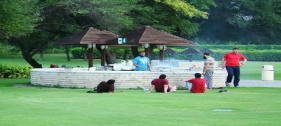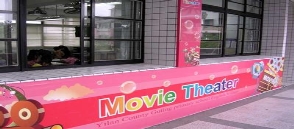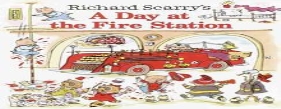题目内容
假设你是李华,请根据以下信息,为英语校报写篇短文,介绍你寒假参加兼职工作的情况。

【写作内容】

[写作要求]:只能使用5个句子表达全部内容。
[评分标准]:句子结构准确,信息内容完整,篇章结构连贯。
I’m Li Hua, a Senior Three student aged 18, and I’d like to share my experience of taking a part-time job with you. To enrich my social life, gain more experience and inspire myself to study harder, I participated in the activity, working in a Xinhua Bookstore for more than 10 days during the winter vacation. There, I mainly did some cleaning, put the books in order and introduced books to customers and I also helped the salesmen sell books 8 hours a day. The work made me really tired, but it also helps me realize that it’s not easy for our parents to earn money. Meanwhile, I have also learned how to communicate with different customers, which has built up my confidence.
【解析】
试题分析:题目要求写一篇短文,介绍自己寒假兼职工作的情况。写作要点以表格的形式=呈现,一目了然。注意只能使用五个句子来表达所有内容;写作中要注意覆盖所有给出的信息,篇章语意要连贯;不能出现拼写、标点错误。
亮点说明:范文注意使用There, and, but, Meanwhile等来连接前后句与上下文,做到了行文紧凑;
范文使用了非谓语动词To enrich my social life, working in a Xinhua Bookstore;宾语从句that it’s not easy for our parents to earn money;非限制性定语从句which has built up my confidence等语法知识,有较好的语法功底;
范文海使用了participate in, put ...in order, introduce ...to ..., communicate with等短语,丰富了文章的内容。
考点:图表类作文

首先,请阅读以下活动场所的介绍:
A |
Town Park Shelter offers rental shelters with various picnic tables, grills and play equipment for chilldren. Keep the food simple and easy, like barbecuing hot dogs or hamburgers. Follow up with a fun birthday cake from a grocery store or your own kitchen. We specially provide some firefighters’ equipment in case of a fire.
| B |
McDonald’s offers kids parties that include a party hostess dressed up as a cartoon movie star, food and cake at reasonable prices. Another great thing about the fast food reataurant is that fascinating playlands or plastic ball pits are available here so that kids can be entertained a lot while adults chat and relax a bit. |
C |
Glory Children’s Museum can be a great place for kids under ten to hold a birthday party if you are interested in the history of fast food like hamburgers and snacks as well as the development of movies. We have party hostesses and provide some supplies. You may only need to bring a birthday cake and presents.
| D |
Chatari Movie Theater rents out the entire theater with a big group discount on snacks and soda. Popular cartoon movies like Firefighters in McDonald’s and An Escape from Tidy’s Community are on show every weekend. We particularly even allow you to bring in your own snacks and birthday cakes. |
E |
Richard Scarry Fire Station provides rooms that we allow the local residents to use for free. Also, our fire department gives the children of a birthday party a tour of the station and let them try on some of the firefighters’ equipment and get their photos taken as birthday gifts. | F |
The Neighbourhood Club House is a club house in the community, which is either free or can be rented for a nominal fee by residents. It will give you more room than your home, and it is close enough to your home that you could set up the birthday party very easily. |
请阅读以下人员信息,然后匹配人员与相关场所:
1.Mary’s mother, a successful businesswoman, would like to hold a grand birthday party for Mary’s fourteenth birthday this Saturday. The party should be held in an unusual place where Mary and her friends can eat snacks, play games as well as see films.
2.Tony will be five years old next Sunday. Considering the weather is becoming warmer, his parents plan to take him to a place where they can have a barbecue, eat a birthday cake and play games with some relatives.
3.Linda plans to invite her best friend Tom to celebrate her eleventh birthday. Both the children are fond of hamburgers, French fries and Coke. Also, the parents of the children want to take the opportunity to chat as well.
4.Hunter would like to invite five friends to stay in his community to celebrate his fifteenth birthday. However, his home is very small, and his parents don’t want to hold the party outside their community or spend too much money on it.
5.Peter, a ten-year-old boy, respects firefighters very much and shows great interest in extinguishing fire equipment and stories about firefighters. For his coming birthday, his parents hope to prepare a unique birthday party for him.





